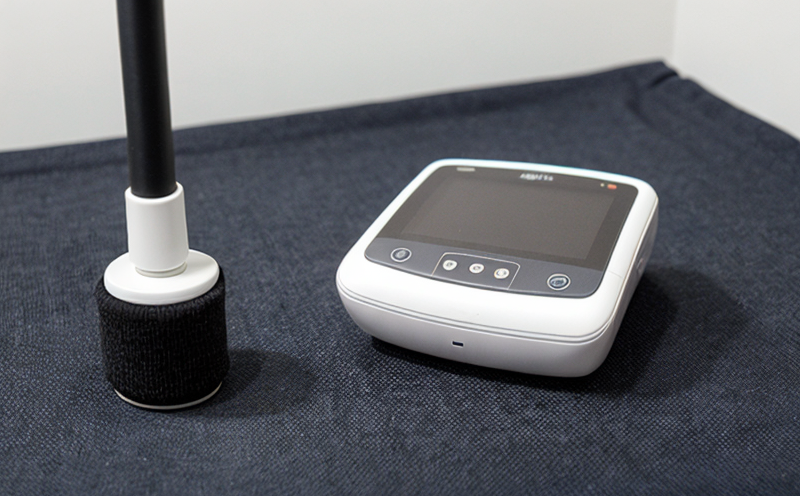AATCC 76 Electrical surface resistivity of e-textiles
The AATCC (American Association of Textile Chemists and Colorists) Standard Test Method 76 is a recognized protocol for determining the electrical surface resistivity of electronic textiles, or e-textiles. This test is crucial in ensuring that textile-based electronic devices can operate safely and reliably under various environmental conditions.
E-textiles are a rapidly growing segment within the textile industry. They combine traditional textile properties with electronic functionalities to create innovative products such as smart clothing, wearable electronics, and medical devices. Understanding the electrical surface resistivity of these materials is essential for ensuring that the textiles perform optimally without compromising safety or reliability.
The test procedure outlined in AATCC 76 involves measuring the resistance between two electrodes placed on a sample of e-textile material. This measurement helps determine how effectively the textile can insulate against electrical current, which is critical for applications like wearable technology and medical devices.
Compliance with this standard ensures that manufacturers meet safety and performance requirements set by regulatory bodies. It also provides confidence to end-users that the products they purchase are safe and reliable. The test results from AATCC 76 can be used to validate product specifications, support design decisions, and ensure compliance with international standards.
The process of conducting this test requires precise measurement techniques and high-quality instrumentation. Proper specimen preparation is critical for accurate results; this includes ensuring the sample is clean and free from contaminants that could affect conductivity. Calibration of equipment and adherence to standard operating procedures are key factors in achieving consistent, reliable data.
Understanding the implications of electrical surface resistivity on e-textile performance can help quality managers make informed decisions about product development and manufacturing processes. By ensuring that products meet or exceed AATCC 76 standards, companies demonstrate their commitment to safety and reliability.
The test results from AATCC 76 are not just numbers—they represent the integrity of the e-textile material under various conditions. This information is invaluable for R&D engineers who need to optimize designs and for compliance officers responsible for ensuring regulatory adherence.
In summary, the AATCC 76 electrical surface resistivity test provides a critical measurement that helps ensure the safety and reliability of e-textiles. By adhering to this standard, manufacturers can produce high-quality products that meet both performance expectations and regulatory requirements.
Eurolab Advantages
EuroLab offers unparalleled expertise in textile testing services, including AATCC 76 for electrical surface resistivity of e-textiles. Our team of experienced professionals ensures that every test is conducted with precision and accuracy, adhering strictly to international standards.
Our state-of-the-art facilities are equipped with the latest instrumentation, allowing us to provide reliable results consistently. We pride ourselves on our commitment to quality and customer satisfaction, ensuring that each testing process follows established protocols without deviation.
At EuroLab, we offer additional value through our comprehensive support services. From specimen preparation guidance to detailed reporting, our goal is to make the testing experience as seamless as possible for our clients. Our team of experts can help interpret results and provide recommendations based on test findings.
We understand that time-to-market is crucial in today's competitive environment. EuroLab ensures prompt turnaround times while maintaining high-quality standards. By choosing us, you are partnering with a reliable source for textile testing services.
Our commitment to excellence extends beyond just meeting regulatory requirements. We strive to exceed expectations by offering personalized service and innovative solutions tailored to your specific needs. Whether you require routine testing or one-off assessments, EuroLab is here to support you every step of the way.
International Acceptance and Recognition
The AATCC 76 standard for electrical surface resistivity has gained widespread acceptance in various industries due to its reliability and accuracy. Many organizations worldwide recognize this standard as a benchmark for evaluating e-textile materials.
Regulatory bodies such as the FDA (Food and Drug Administration) and CE marking authorities often require compliance with AATCC 76 when approving products that incorporate electronic functionalities into textile substrates. This ensures that these products are safe, reliable, and meet stringent quality control measures before reaching consumers or being used in medical applications.
Companies operating globally benefit from having consistent testing methods across different regions. By adhering to international standards like AATCC 76, they demonstrate their commitment to maintaining high-quality standards regardless of location.
The standard is also widely accepted by academic institutions and research organizations involved in developing new e-textile technologies. Their acceptance reinforces the significance of this test method within the broader scientific community.
With increasing demand for smart textiles across various sectors, including fashion, healthcare, automotive, and sports, there is a growing need for accurate measurements of electrical surface resistivity. The global recognition of AATCC 76 helps bridge gaps between diverse markets, fostering international collaboration in textile technology advancement.
Environmental and Sustainability Contributions
The use of e-textiles has significant potential to contribute positively to environmental sustainability efforts. By incorporating electronic functionalities into textiles, manufacturers can reduce the need for separate electronics accessories while enhancing functionality and comfort.
E-textiles made according to AATCC 76 standards are designed to be durable and long-lasting, reducing waste associated with frequent replacement of single-use devices. Additionally, the development of sustainable e-textile manufacturing processes can lead to lower energy consumption during production and improved resource efficiency throughout the lifecycle of these products.
Compliance with international standards like AATCC 76 also ensures that e-textiles are manufactured using environmentally friendly practices. This includes selecting materials that have minimal environmental impact, minimizing waste generation during processing, and optimizing energy usage in manufacturing facilities.
The ability to monitor and manage the electrical performance of e-textiles through rigorous testing helps identify opportunities for improvement in both design and production processes. For example, understanding how changes in fabric composition or construction affect electrical properties allows manufacturers to innovate more sustainable solutions.
By embracing standards such as AATCC 76, companies contribute not only to their own success but also to broader environmental goals. The focus on sustainability through rigorous testing supports a greener future where technology and nature coexist harmoniously.





